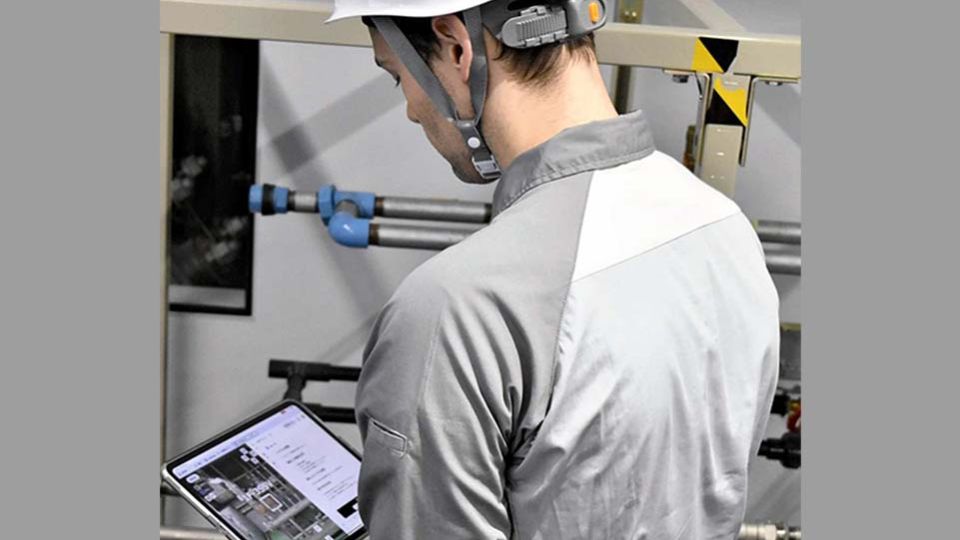July 28, 2025
TOKYO – An increasing number of manufacturing companies are trying to utilize artificial intelligence systems to pass on senior colleagues’ skills to young workers in manufacturing plants, as the sector faces an aging employee base and labor shortages.
Through trial and error, companies are developing schemes to more practically and efficiently train employees, looking to improve on conventional methods in which young workers had to acquire skills by watching the actions of senior colleagues.
Using AI system on tablets
An AI work system utilizing the metaverse, a virtual space on the internet, was recently shown to the press at a research and development base of Hitachi Ltd. in Kokubunji, Tokyo.
Takayuki Akiyama, chief researcher at the base, input the following question into a tablet: “A sensor indicates the temperature is too high. What should I do?”
The AI system assessed the most suitable work processes based on blueprints of equipment and past examples of incidents. “It seems there is a shortage of cold water. Please manually open the cold water valve,” was its response.
In the metaverse, users can view specific methods for operating devices. The AI system can be used by workers with less experience.
Inspections of a Renesas Electronics Corp. plant found that the abilities of unskilled workers rose by about 30% as a result of using Hitachi’s AI system.
“It is important to create schemes to more efficiently pass on the skills of highly skilled workers,” Akiyama said.
Utilizing virtual reality
Like Hitachi, Meidensha Corp., a major heavy electronic machinery maker, aims to “visualize” skills to efficiently pass them on to younger workers.
The company plans to introduce a training system as early as this autumn in which manufacturing sites containing electric transformers, electric switchboards and other devices are reproduced in a 3D virtual reality space.
“Workers can learn in any place and at any time,” a company official said. “As fears of labor shortages are increasing, we want to reliably pass on veteran workers’ skills to the juniors.”
Shift from on-the-job training
Until recently, the main method of passing on veteran workers’ skills had been on-the-job training. By comparison, AI-assisted systems can be more efficient.
NEC Facilities Ltd., a subsidiary of NEC Corp., opened a job training facility last year for fostering managers who control plant equipment. The same type of equipment and facilities as those in real plants, such as a clean room necessary for the production of semiconductors, have been set up in the training facility.
A generative AI system analyzes workers’ actions and automatically produces reports which propose points of improvement.
New workers at the company’s plant typically need about 12 years to become skilled workers, but the AI system could shorten the period to six years.
According to the Economy, Trade and Industry Ministry’s White Paper on Manufacturing Industries, the total number of employees in manufacturing companies in 2024 was 10.46 million, down about 10% from 20 years ago. In the white paper, 85.3% of manufacturing companies said that they have difficulties fostering human resources and developing workers’ capabilities. Of those, more than 60% added that human resources for training younger workers are in short supply.

